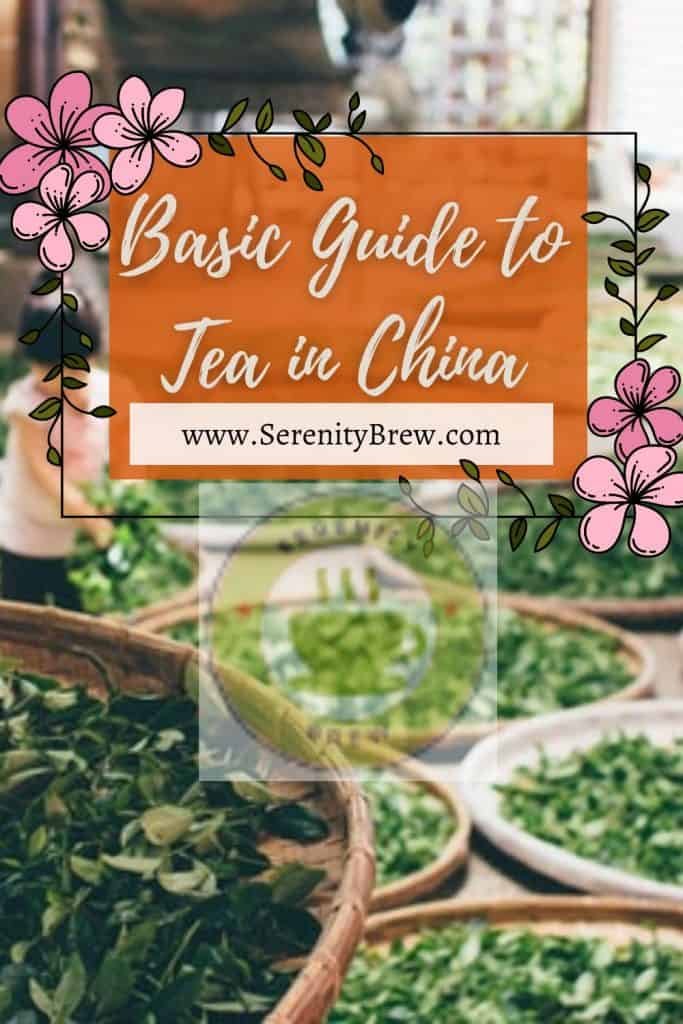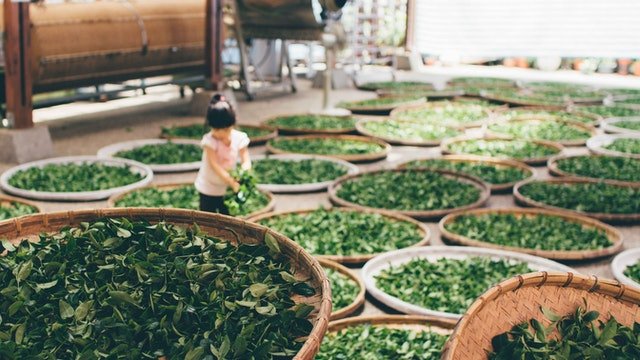
China is the producer of hundreds of varieties of tea and you have to know that not all of them reach Western markets.
The most common varieties of tea in China are green, although of course we find numerous cases of black teas, pu’erhs and oolongs. Today we enter the world of tea in China paying special attention to its famous green teas.
Green tea making in China
Before diving into this topic, we want to share with you a curiosity: did you know that China produces around 80% of the green tea that is consumed throughout the world? Beyond these anecdotal data, it is interesting to discover how they make their famous green tea.
The first step is collection. In this, the shoots and young leaves of the Camellia sinensis are selected. It is a process that can be done manually or mechanically; the mechanism chosen indicates the quality of the tea. That is to say that the tea collected manually is usually of better quality and, therefore, more expensive.
Also, the time of harvest deserves a separate mention, since it has a notorious influence on the characteristics of the tea. Harvesting in China takes place three times a year, between March and June. The first harvest is the most appreciated and gives rise to the most exclusive teas.
However, once collected, the leaves go through a process that in China is called “killing the green.” Its objective is to stop the oxidation process that enzymatically breaks down the chlorophyll in the leaves and transforms their tannins.
To “kill the green,” the leaves are roasted in large woks over open fires. In this way, the natural oxidation process of the leaves is stopped and they acquire that roasted and earthy flavor so characteristic of Chinese green tea.
Finally, the leaves are rolled to acquire the shape that we all know. This last step ensures that they maintain their flavor, color, aroma and properties.
The taste of tea in China
Although the taste varies from one type of Chinese green tea to another, in general terms we are talking about a complex tea. This complexity is largely due to the roasting process that we mentioned earlier.
After it, the tea acquires a round, warm flavor, with toasted and earthy touches reminiscent of walnuts and chestnuts, dried fruits, flowers and vegetables, depending on the kind that is drunk.
With controlled astringency and a liquor that ranges from gold to deep green in the cup, Chinese green tea is a true feast for the palate, whatever variety is chosen to taste.
Chinese green teas

As in Japan, there is a huge variety of Chinese green teas ranging from the famous Longjing to Biluochun, less known in the West. Each of these green teas has a different personality that is due to the territory where it is produced, the selection of the leaves and the subsequent treatment. Do we discover them?
Longjing
Legend has it that the Qianlong Emperor visited the Longjing harvest area and fell so in love with the taste of the brew and the mastery with which the leaves were harvested that he decided to learn how to do it too. However, he received word that her mother was very ill and he rushed off to see her. So hurried was he that he forgot that she had some leaves up her sleeve.
His mother suffered from a terrible indigestion and smelling the aroma that emanated from her son thanks to the tea leaves, she got better. So Qianlong, remembering that she had the leaves up her sleeve, prepared this green tea for him and his mother. So much was the pleasure of both that, later, the tea bushes located in front of the Hu Gong Temple where Qianlong had collected the leaves received the imperial status.
Dragon Well Tea is one of the most loved teas in China. In fact, it is extremely popular in that country, so much so that there are counterfeits of it.
Originating from the area around Hangzhou in Zhejiang province, this tea is characterized by flat, lance-shaped, yellowish-green leaves. Its liquor is soft, with vegetable touches that can remind peas or broccoli. This flavor varies slightly depending on whether the leaves are collected before or after the rainy season.
Anji Bai Cha
Although it is known as Anji white tea, it is actually a green tea that owes its curious name to the paleness of its leaves. Actually, it is made from the shoots of tea bushes that produce very little chlorophyll and are found in the city of Anji in Zhejiang province.
After harvesting the young shoots, buds and leaves in early spring, they are wok-roasted to produce leaves so sharp they resemble pine needles. In the cup, it is sweet and very delicate.
Biluochun
This variety of Chinese green tea is produced on Dongting Mountain in Fujian province. Its name, which means something like “spring of the green snail”, refers to its cultivation since it is harvested during the rainy season.
It stands out for its curly shape that can remind of a snail (its name makes sense), its strong aroma and its slightly fruity flavor with a touch of walnut.
Lu’an Gua Pian
Melon seed green tea gets its name from the shape of the leaves, which look like little balls. Used in the past as an imperial tribute, it is prepared from the open mature leaves at least 4 cm long of the tea plant. In this case, shoots and young leaves are excluded.
After harvesting, the leaves are pressed and roasted in woks. Then, once dry, they are stirred with bamboo brushes until they obtain their characteristic shape. The last step is a quick toasting over hot coals. Thus, it acquires a strong, fresh and sweet flavor, complex and with very little astringency.
Zhu Ye Ching
This particular variety is made from the leaves of the Camellia Sinensis that grows on the Emei Shan mountain, at an altitude of more than 3,000 meters. In Spanish, it is known as bamboo tea since its leaves are similar to that plant. When infused, a golden-green drink with a slightly astringent flavor is obtained, with hints of asparagus and chestnuts.
Mao jian
Jade Points is one of the highest quality Chinese green teas. Produced in Henan province, it is characterized by its sharp leaves and the presence of unopened buds. It is produced in spring and autumn, and stands out for its sweetness and subtlety. It is an exclusive tea: it is said that around 50,000 buds are needed to make 50 grams of it.
Huangshan Maofeng
This is harvested in the yellow mountain of Anhui province during the spring. Its beak-shaped leaves are easily recognizable due to their ivory-colored hairs. The result? A very aromatic golden infusion with a sweet taste.
Jasmine pearls
This tea is very striking from its presentation. They are small balls, hence their name, made up of a bud and small leaves that have dried to the desired shape. Then, the pearls are stored together with the jasmine flowers, previously separated from their stems, to make them aromatic. Undoubtedly, a totally different experience for the palate.
Xinyang Maojian
In Henan province, tea known as “cup fluff” is produced. This name refers to the small young tea leaves and their white fuzz that take on a slightly rolled shape at the ends.
Tian Mu Yun Wu
On Tan Mu Mountain in Zhejiang Province, this tea is produced from small buds harvested in April. As you can imagine, a large amount is needed to obtain a kilo of tea (about 60,000 buds). Due to the mist that covers the mountain on a regular basis, it is a sweet, light and very pleasant tea.
Pouchong
We categorize this variety as green tea, although it is worth noting that it is located between green tea and oolong, due to its slight oxidation. In terms of flavour, floral notes and a hint of melon can be perceived.
These are the most famous varieties of Chinese green teas but there are many more, the richness of China in the world of teas is incomparable. Dare to discover it.
